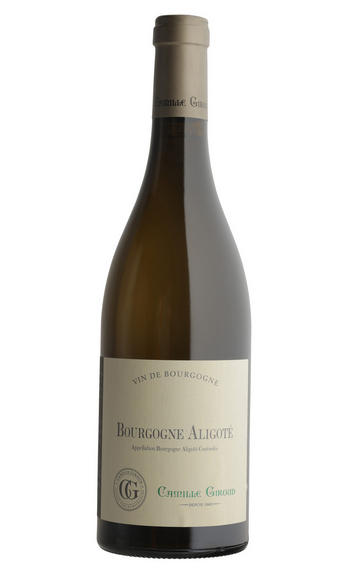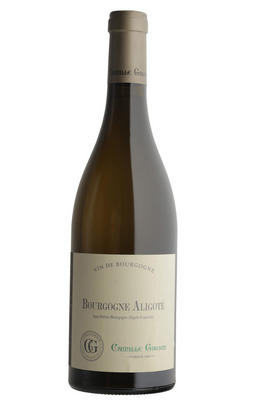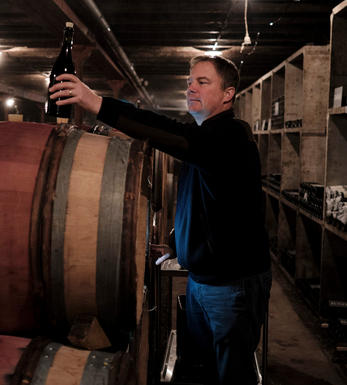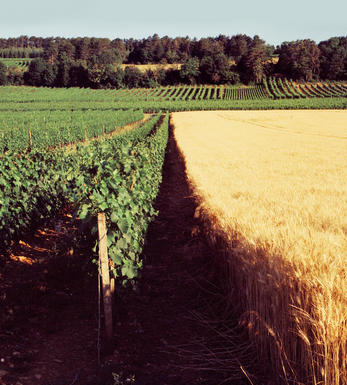
2021 Bourgogne Aligoté, Camille Giroud

Critics reviews
Made from old vines in Pernand, farmed with biodynamics. Clear mid lemon colour. A bright fresh tangy and citrus infused Aligoté nosed. This is one of the fresh, vivid versions, some apple notes too behind.
Jasper Morris, Inside Burgundy (January 2023)
A classic aligoté nose freely offers up its aromas of spice, citrus and green apple. There is unusually good density to the intense and appealingly textured middleweight flavors that conclude in an impressively long, chiseled and very dry but not austere finish. This is excellent for what it is and recommended.
Drink from 2025 onward
Allen Meadows, Burghound.com (June 2023)
The 2021 Bourgogne Aligoté shows a little dustiness on the nose. The palate is balanced and more promising with citrus peel and Williams pear, though I'd like a little more depth on the finish. But overall, this is a decent Aligoté.
Head winemaker Carel Voorhuis is unfortunately ill on the day of my visit, so commercial director Aurélien Bigot takes me through their wines. “We started the picking on 21 September until 8 October, during which we sorted out around 15-20% of diseased/mildew affected bunches,” Bigot tells me. “There is less crop, around half for the Premier and Grand Crus. Also, the duration of cuvaison was shorter with a slightly lighter maceration in order to not extract unwanted flavours. For the élevage, we used fewer new barrels, around 20-30% in general, with a little more for the whites. For example, on the Chassagne Tonton Marcel, we just have a feuillette. At the moment, we don’t know the time of bottling; the whites will probably be at the beginning of next year.”
Camille Giroud’s 2021s reflect the inconsistencies of the vintage. Relying on contracted fruit leaves, even for a skilled winemaker like Voorhuis at the mercy of vineyard managers, is risky in such a difficult growing season as 2021. For example, I feel that the Charmes-Chambertin and Chambertin leave much to be desired; it’s skinny and a bit mean, whereas their Clos Vougeot is wonderful. Essentially, it’s a mixed bag through no fault of the team under Voorhuis, and they’ll be back much stronger next year.
Drink 2023 - 2027
Neal Martin, Vinous.com (January 2023)
About this WINE

Maison Camille Giroud
Established in 1865, Maison Camille Giroud has a rich heritage rooted in Burgundy’s winemaking tradition. Initially a specialist négociant, they sourced wines from esteemed growers across the renowned Côte d’Or region, ageing them meticulously in their cellars for decades to achieve peak maturity.
In 2001, a consortium, including Napa Valley winery owner Ann Colgin and wine investors, took over, aiming to blend tradition with modern techniques and a terroir-driven approach. This led to innovations, like wooden presses and open vats, under the dynamic winemaker David Croix.
Most wines continued to be crafted from carefully selected grapes, many from old vines. Their commitment to natural winemaking practices, including native yeast fermentation and minimal intervention, set them apart.
In 2016, Carel Voorhuis continued the legacy of crafting pure, terroir-driven wines, maintaining Maison Camille Giroud’s reputation for excellence in Burgundy.

Bourgogne Aligoté
Bourgogne Aligoté is a regional Appellation d’origine contrôlée (AOC) for white wines produced in Burgundy from the Aligoté variety of grape, which dates from 1937.
Aligoté grapes have played a prominent role in white Burgundy production since the 1600s, but are now being phased out in favour of the more popular and profitable Chardonnay grape: in 2007 only 1,700 hectares (4,200 acres) of Aligoté were grown compared to the 12,800 hectares (32,000 acres) of Chardonnay. The AOC regulations permit up to 15% Chardonnay to be blended with the Aligoté.
Bourgogne Aligoté is usually regarded as a somewhat more acidic wine, best enjoyed in its youth due to its lighter nature. It is also a primary component in the production of the popular French cocktail kir, by combining the Aligoté wine with the blackcurrant liqueur crème de cassis.
Aligoté has one appellation exclusive to its grape: Bouzeron, in the Côte Chalonnaise region of Burgundy, where 53 hectares are dedicated to this unique Aligoté based wine.

Chardonnay
Chardonnay is often seen as the king of white wine grapes and one of the most widely planted in the world It is suited to a wide variety of soils, though it excels in soils with a high limestone content as found in Champagne, Chablis, and the Côte D`Or.
Burgundy is Chardonnay's spiritual home and the best White Burgundies are dry, rich, honeyed wines with marvellous poise, elegance and balance. They are unquestionably the finest dry white wines in the world. Chardonnay plays a crucial role in the Champagne blend, providing structure and finesse, and is the sole grape in Blanc de Blancs.
It is quantitatively important in California and Australia, is widely planted in Chile and South Africa, and is the second most widely planted grape in New Zealand. In warm climates Chardonnay has a tendency to develop very high sugar levels during the final stages of ripening and this can occur at the expense of acidity. Late picking is a common problem and can result in blowsy and flabby wines that lack structure and definition.
Recently in the New World, we have seen a move towards more elegant, better- balanced and less oak-driven Chardonnays, and this is to be welcomed.


Buying options
Add to wishlist
Description
This is from old vines of Aligoté Doré near Pernand-Vergelesses. Jasper Morris, in his book Inside Burgundy, states that old Aligoté from around Pernand-Vergelesses is supposed to resemble Corton-Charlemagne with time, but it must be harvested late. This year’s harvest was around 3rd October. Every note says the same: delicious. You can drink it now but patience beyond a safe timeframe is also rewarded.
Drink 2023 - 2030
Berry Bros. & Rudd
wine at a glance
Delivery and quality guarantee